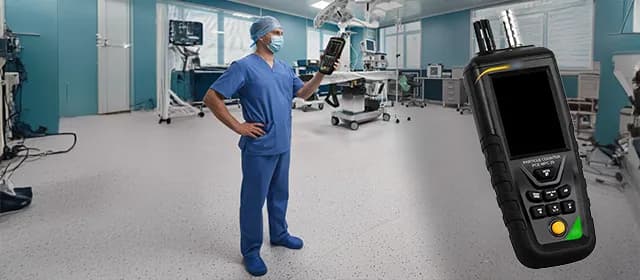Porokeratosis is a rare, chronic keratinizsation disorder that poses unique challenges for dermatologists, oncologists, and healthcare providers. Characterized by annular, hyperkeratotic lesions, it encompasses multiple subtypes such as disseminated superficial actinic porokeratosis (DSAP), porokeratosis of Mibelli, and linear porokeratosis. Although its prevalence is relatively low, the condition carries significant clinical importance due to its potential for malignant transformation and recurrent nature.
The complexity of porokeratosis lies in its variable presentation, multifactorial pathogenesis, and chronic course, which require multidisciplinary management strategies. Ultraviolet (UV) radiation, genetic predisposition, immunosuppression, and age are key risk factors influencing lesion development and progression.
From a healthcare industry standpoint, the need for effective, durable treatments and advanced diagnostic tools presents significant opportunities for innovation. According to Kings Research, the global porokeratosis market is projected to generate a revenue of USD 3,239.2 million by 2031. Rising awareness, evolving clinical guidelines, and ongoing research into porokeratosis pathophysiology underscore its relevance as an emerging focus in dermatologic care and therapeutics development.
Epidemiology and Risk Factors
Porokeratosis remains relatively rare, with prevalence estimates ranging from 0.5% to 2% in the general population (Source: https://pmc.ncbi.nlm.nih.gov/). The disseminated superficial actinic subtype (DSAP) is the most common, accounting for 56% of cases. It tends to present in adulthood, often between ages 30 and 70, with a slight female predominance.
The condition’s occurrence is significantly influenced by genetic and environmental factors. UV radiation plays a major role, with lesions typically appearing in sun-exposed regions such as the forearms, lower legs, and face. Genetic predisposition is also critical; certain mutations in genes involved in keratinization, such as SART3 and MVK, have been implicated in familial forms. Immunosuppression, whether due to organ transplantation, long-term corticosteroid use, or systemic immunomodulators, increases the risk of both developing porokeratosis and malignant transformation.
Globally, there is also variation in prevalence, with higher rates reported in populations with fair skin and significant UV exposure, such as northern Europe and Australia. Seasonal variation is noted as lesions often worsen during summer months and improve with reduced sun exposure, highlighting the importance of preventive care.
What Are the Clinical Features and Risks Associated with Porokeratosis?
Clinically, porokeratosis manifests as annular, scaly plaques with a raised keratotic ridge surrounding a central area of atrophy. Lesions may range in size from a few millimeters to several centimeters, with irregular shapes. They are most commonly found on sun-exposed areas, reflecting the influence of chronic ultraviolet (UV) exposure. Patients often report seasonal worsening during summer months, and some subtypes may present with pruritus, tenderness, or cosmetic disfigurement that impacts quality of life.
A critical clinical risk is malignant transformation. Studies indicate that between 6.9% and 30% of porokeratosis cases progress to non-melanoma skin cancers, particularly squamous cell carcinoma (SCC) and, less frequently, basal cell carcinoma (BCC) (Source: https://www.ncbi.nlm.nih.gov/). Disseminated superficial actinic porokeratosis (DSAP) carries a 7.5% to 10% risk of evolving into SCC or BCC, particularly in immunocompromised individuals or those with extensive lesions. Immunosuppressed patients, including organ transplant recipients, may face ha igher risk of developing skin cancer compared to the general population.
In addition to malignant potential, chronic lesions may cause persistent discomfort, pruritus, and psychosocial distress. Long-standing lesions may develop secondary infections or ulcerations, further complicating management. These factors underscore the importance of vigilant surveillance and early intervention.
How Is Porokeratosis Diagnosed and Managed?
Diagnosis:
Diagnosis of porokeratosis begins with a clinical evaluation, where dermatologists look for hallmark annular lesions with a keratotic rim. Dermoscopy is a valuable adjunctive tool, revealing a “white track” border and central atrophy that differentiates porokeratosis from actinic keratosis, psoriasis, or eczema. Histopathological confirmation is the gold standard, showing the cornoid lamella, a thin column of parakeratosis with underlying dyskeratotic keratinocytes.
In certain cases, especially familial or early-onset porokeratosis, genetic testing may be employed to identify mutations in keratinization genes. Imaging tools such as reflectance confocal microscopy and high-frequency ultrasound are being investigated as non-invasive diagnostic aids. These tools could enhance early detection and guide management decisions, particularly in cases with atypical presentation.
Management:
Management of porokeratosis is challenging because no single therapy is universally effective. Treatment strategies are tailored to the subtype, lesion location, extent, and patient risk factors.
Topical agents such as diclofenac 3% gel, 5-fluorouracil, and imiquimod are often used for localized disease, demonstrating variable success. Photodynamic therapy (PDT) has shown efficacy for multiple lesions and offers good cosmetic results. Resistant or widespread cases may require cryotherapy, laser ablation (CO₂, erbium:YAG), or surgical excision. Immunocompromised patients often require more aggressive interventions and long-term follow-up due to the higher risk of malignant transformation.
New treatments are being developed. Systemic retinoids like acitretin work well for linear and widespread forms by controlling keratinocyte proliferation. New immunomodulatory agents and gene therapies are being trialed. Advances in AI-driven dermoscopy and machine learning for lesion recognition will help with earlier detection and monitoring.
What Are the Implications for Healthcare Providers and Industry Stakeholders?
For providers, porokeratosis is not just a dermatologic oddity; it’s a premalignant condition that requires long-term monitoring. Early recognition, patient education on sun protection, and timely treatment can reduce the risk of malignancy. Follow-up is especially important for high-risk groups, organ transplant recipients, long-term immunosuppressed, and large or recurrent lesions.
From an industry perspective, porokeratosis is a clinical challenge and an opportunity. The chronic and recurrent nature of the disease, combined with the lack of universally effective treatments, means there is a need for innovative solutions. This includes targeted topical formulations, gene-based interventions, and minimally invasive devices. The adoption of dermoscopy and AI-powered skin imaging tools creates further opportunities for companies to develop advanced diagnostic platforms for early detection and monitoring.
The number of clinical trials listed on ClinicalTrials.gov is growing. Collaborations between academic institutions, pharmaceutical companies, and providers can accelerate the development of new treatments, especially in retinoids, immunomodulators, and precision dermatology. This will not only improve patient outcomes but also create big commercial opportunities in dermatology and oncology crossover markets.
Final Thoughts
Porokeratosis is rare but presents clinical and therapeutic challenges due to its chronic nature, many subtypes, and potential for malignant transformation. For healthcare providers, early recognition, accurate diagnosis, and tailored management are key to reducing risk and improving outcomes. From an industry perspective, the unmet need for durable treatments and advanced diagnostic tools is huge. Continued research and collaboration across dermatology, oncology, and biotech will be key to moving care forward, reducing recurrence, and developing treatments that address both clinical and economic burden.




